Table of contents
- Letter from the Board
- Modelica Association
- Conferences and user meetings
- Vendor news
- News from libraries
- Education news
Letter from the Board
Dear Modelica, FMI, SSP, DCP, eFMI interested,
I am writing to you as the newly elected chairperson of the Modelica Association. After 25 years of inspiring leadership, we could honor the enormous contribution that Prof. Martin Otter made to this association since its official foundation in the year 2000 with a celebratory colloquium in Munich. His never-ending drive for new technologies and his incredible know-how in system dynamics ensured that both Modelica and FMI became standards of world-wide recognition. Given this, the board is very grateful that he remains an active part of the Modelica Association in his new role in the board leading technology.
I am very honored by the faith put in my person being elected by our members. It will be my privilege to ensure that Modelica as standard for mathematical modeling becomes even better accessible and easier to learn. We can be proud on the enormous success of the FMI-standard that meanwhile gathered support of more than 200 tools. This inspires us to reach also new levels of popularity on our point of origin: mathematical modeling.
The community is very active in these days, and I am happy to announce many events happening in the near future:
- Keynote speakers were announced for the American Modelica Conference 2024 this October. We are excited to hear from Swaminathan Gopalswamy, Director of the Connected Autonomous Safe Technologies (CAST) Lab and from Clas A. Jacobson who is Senior Fellow in Systems Engineering at Carrier. Registration is open and early bird tickets are available until August 10.
- The call for papers for the Asian Modelica conference in South Korea is still open. Scientific contributions can be handed in until August 1. Industrial user presentations and tutorials can be proposed until September 1.
In the second half of 2024, a number of Modelica related events are located in Munich, Germany:
- September 4 - 6: I will attend the ASIM Symposium that addresses the German-speaking community for modeling and simulation.
- September 9 - 10: The ThermoSim 2024 addresses the challenges in modeling and simulating thermal systems.
- December 4-5: The ASAM international Conference is especially relevant with respect to FMI and related standards.
Last but certainly not least, we are now planning the 16th International Modelica Conference:
- September 8-10, 2025, in Lucerne, Switzerland. Organized by the University of Lucerne and the Modelica Association.
This will be the first visit of our conference tour to Switzerland. The Swiss economy is very active, multifaceted and successful. Many smaller, highly specialized companies are now using system simulation more intensively than before and this conference will be a great opportunity for mutual exchange.
Our community is also growing: we are very glad to welcome two new organizational members to our association:
- COMSOL is member since March 13, 2024.
- Beckhoff Automation is member since May 9th 2024.
Further growth in advisory members is spurred by the FMI group and communicated in the corresponding FMI news.
If you have interesting news for the Modelica, FMI, SSP, DCP, eFMI communities, please follow the submission guidelines. The deadline for articles for the next newsletter is Friday, November 15, 2024.
Dirk Zimmer on July 11, 2024
Chair of the Modelica Association
This article is provided by Dirk Zimmer (Modelica Association)
Modelica Association
FMI news
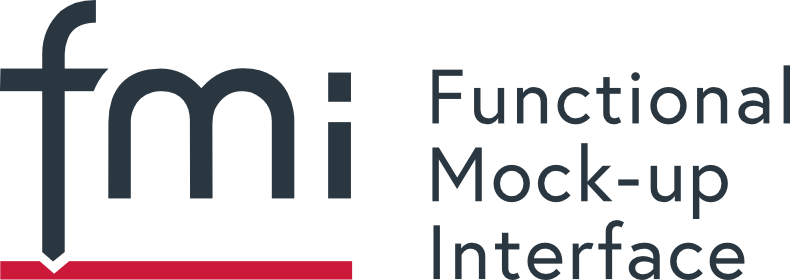
FMI Tools List, Compatibility Information, growing FMI 3.0 support

The FMI tools page now lists 211 tools supporting tools!
The tools listed on top and marked with the golden star now provide “compatibility information”: They document how the tool vendors have tested their FMU import and export capabilities and standard compliance with other tools. Exporting tools also provide example FMUs, that can be tested by other importing tools. This information is provided on an external webpage or repository in the responsibility of the tool vendors.
We see an acceleration in the adoption of FMI 3.0, with 41 tools already supporting it.
FMI Design Meeting in May 2024 in Munich
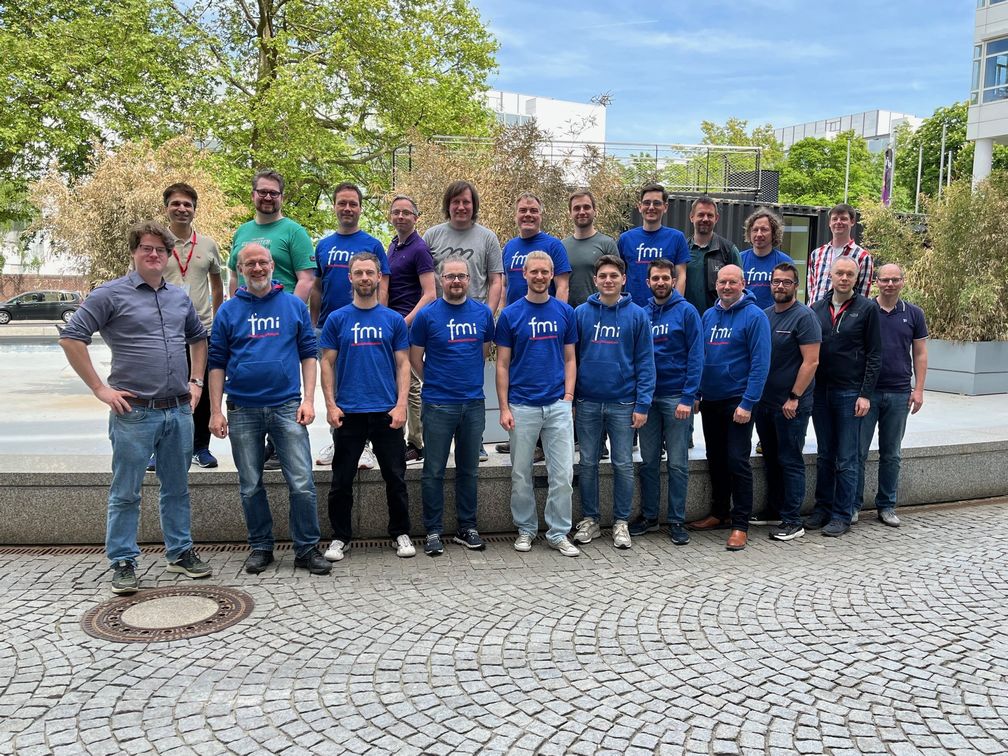
FMI developers from Altair, AVL, Bosch, Dassault Systems, dSPACE, EKS-INTEC, LTX, Modelon, PMSF, Synopsys, and Wolfram MathCore participated at the 3 day FMI Design Meeting in Munich. Thanks to Dassault Systèmes for the great hospitality! We made good progress, especially on layered standards to FMI 3.0:
- FMI-LS-XCP for XCP support (to be released soon)
- FMI-LS-BUS for network communication (v1.0.0-beta.1 available)
- FMI-LS-STRUCT for maps and structuring of variables
- FMI-LS-REF for the description of basic validation experiments and other files attached to an FMU
- Performance topics
- FMI Challenges and Self-Certification
Project members
After the clarification of membership in the updated FMI Project Rules, many new companies and organizations joined the FMI Project, which now has the following members:
Members of the Steering Committee:
AVL List, BOSCH, Dassault Systemes, dSPACE, ESI Group, Maplesoft, Modelon, PMSF, Siemens PLM, Synopsys
Further Contributing Members:
Aarhus University, ABB, Altair, Akkodis, AMEPERE, Ansys, Augsburg University, Beckhoff, Boeing, Danfoss, DLR, EKS INTEC, ETAS, Fraunhofer IEM, ITK Engineering, iVH, JuliaComputing, LTX, Machineware Renault, Saab Group, Virtual Vehicle Research, Wolfram MathCore AB, TLK Thermo, tracetronic, TU Dresden and all Steering Committee Members
Members of the Advisory Committee: AIRBUS, blue automation, COMSOL, Fraunhofer (IIS/EAS First, SCAI), KEB Automation, NVIDIA, Knorr-Bremse Rail Vehicle Systems, Open Modelica Consortium, Samares Engineering, TWT, University of Halle, Volkswagen and all Contributing and Steering Committee Members
FMI Beginners Tutorial at the Simultech Conference 2024
There was an FMI Beginners Tutorial given at the Simulatech Conference 2024 by Christian Bertsch, Cláudio Gomes, Maurizio Palmieri. The material is available here.
You can watch a recording of the “FMI Beginners’ tutorial” from the Modelica Conference 2023 in Aachen on YouTube.
Other Resources and Discussion Forums for FMI related Questions
- Join the LinkedIn FMI community to get the latsted news on FMI, FMI supporting tools and discussions within the user community.
- Ask technical questions and discuss topics on the usage of FMI on Stackoverflow tagged “FMI”.
- Report problems of the standard itself or suggestions for new features in form of issues on fmi-standard.org.
This article is provided by MAP FMI
MAP eFMI®: Beta 1 candidate-draft of eFMI® Standard 1.0.0 released
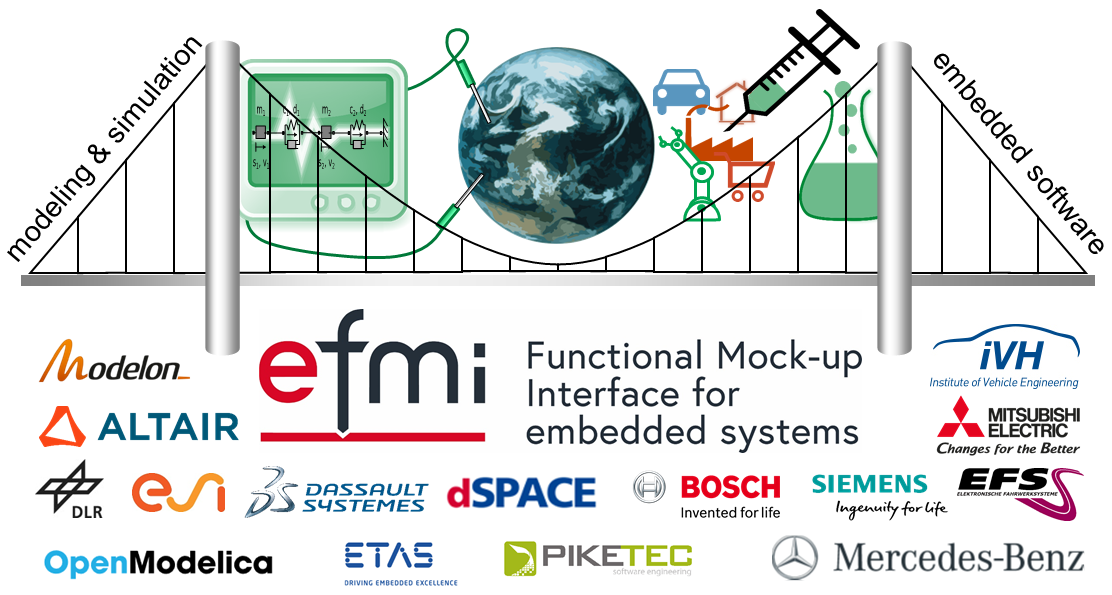
eFMI® Standard 1.0.0 Beta 1 released
The next candidate-draft, the eFMI® Standard 1.0.0 Beta 1, for the first official release of the eFMI® Standard has been released! You can find it on the official eFMI® website, https://www.efmi-standard.org/.
This is the first Beta release since the last candidate-draft, the Alpha 4. We are therefore now in beta phase, with each beta finalizing one model representation chapter.
This release focuses on the Behavioral Model representation, whose specification has been finalized and significantly extended and improved to achieve semantic completeness. Among many features, eFMI® Behavioral Models support:
- testing of any other eFMI® model representation like Algorithm, Production or Binary Code
- equidistant and variable time grid scenarios, the former with well-defined acceptable time-deviation and the latter with well-defined interpolation semantic
- tolerances configurations defining the absolute and relative error tolerances of variables for various floating-point precisions
- mapping configurations defining how to map variables of any dimensionality (scalar, vector, matrix, or higher dimensionality) to reference trajectories stored in CSV files
- proper handling of time grids w.r.t. actual (i.e., used to conduct a test) and presupposed (i.e., assumed by the test provider) sampling times
- proper handling of units of reference trajectories and tolerances
- testing of error signals, including test scenarios with expected errors
- test scenarios with runtime recalibration of tunable parameters
- clear requirements on test environments and definition of how to conduct a test
Besides the “Behavioral Model representation” Chapter, Beta 1 also finalizes the PDF layout and support chapters, like:
- footer with standard version, current page number and total, licensing and website link
- use of single open source font family
- blank pages for correct printing
- “Legal information” Chapter, now with colophon stating the licenses of used open source fonts, trademarks and disclaimer
- the title page, now with eFMI® logo.
There are only minor improvements in the other chapters; they will be focused on and finalized in individual future Beta candidate-drafts. The plan for Beta 2 is to wrap up the current preamble with “Abstract”, “Overview” and “Introduction” Chapters into a single “Overview” Chapter, wrap up and finalize Chapter 1, “General Concepts”, and Chapter 2, “eFMU container architecture”, into a single “Common concepts” chapter, and finalize Chapter 3.1, the “Algorithm Code manifest”.
Testing – and how to define tests, store references, integrate the tooling subject to testing, and make sure different test environments agree on the test results for a certain tooling – is certainly a hot topic for any Modelica Association standard and project. We sincerely hope that the eFMI® Standard 1.0.0 Beta 1 provides an excellent starting point for discussion and insights on the challenges of achieving well-defined semantics and completeness, even if “just” for something as “simple” as testing sampled data systems.
If you have any general questions, feedback or improvement proposals for the eFMI® Standard, please follow the reporting specification issues and new feature requests guidelines on our website or contact us on our public mailing list, efmi-info@googlegroups.com (no Google account required).
Your feedback is very welcome!
This article is provided by Christoff Bürger (Dassault Systèmes)
Conferences and user meetings
American Modelica Conference 2024
Join the American Modelica Conference 2024, which will be an in-person conference event, with an option to watch presentations streamed online for a reduced conference admission fee. Registration is now open at Eventbrite. Take advantage of the early bird registration until August 10, 2024.
The conference will take place at the University of Connecticut in Storrs in the Innovation Partnership Building from October 14–16, 2024. It is organized by NAMUG, the North American Modelica Users’ Group, in cooperation with the Modelica Association. Join us in person in Storrs or from the comfort of your own home.
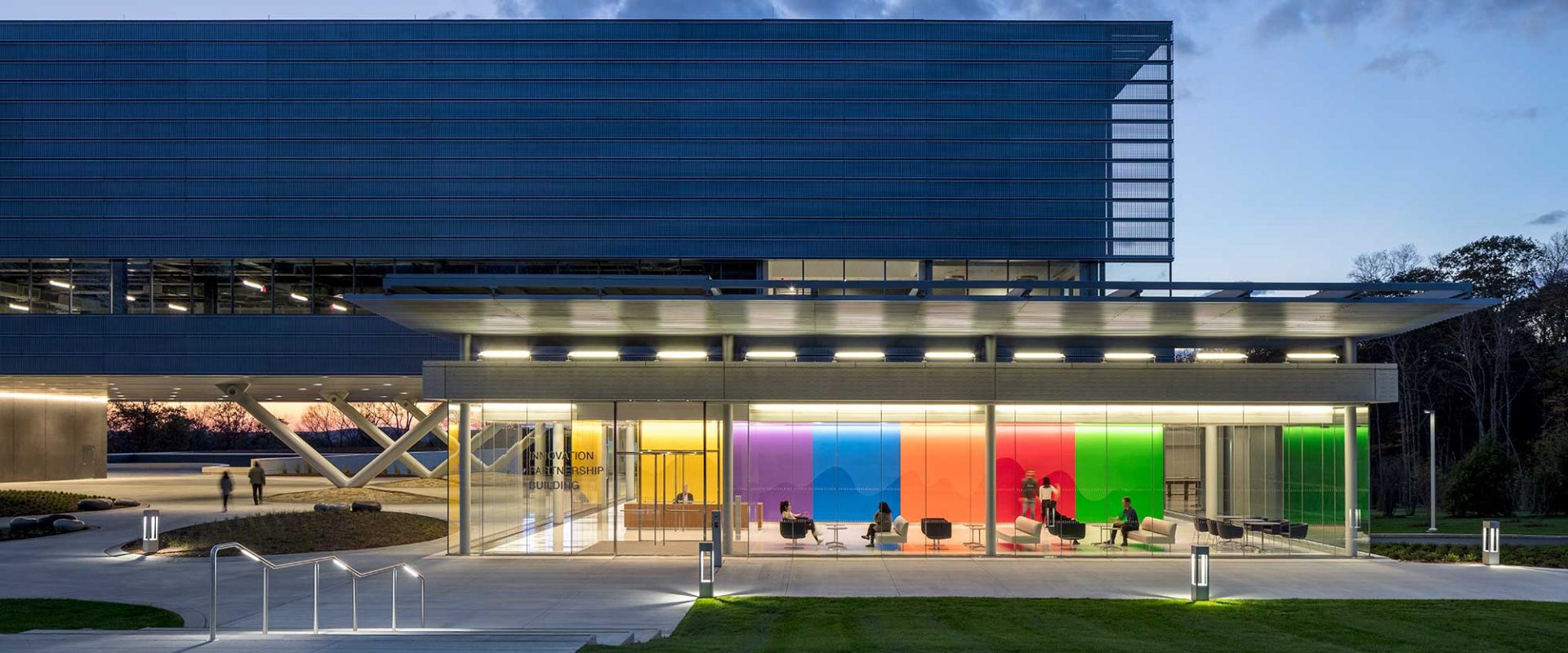
About the Conference
As part of the conferences promoted by the Modelica Association, the American Modelica Conference 2024 is the main event in North America for users, library developers, tool vendors and language designers to share their knowledge and learn about the latest scientific and industrial progress related to Modelica, FMI, SSP, eFMI and DCP. The program will cover processes and tools for the modeling of complex physical and cyber-physical systems as applied to a wide range of research and industrial applications.
In addition to paper presentations, the conference features several Modelica tutorials for beginners and advanced users, as well as industrial user presentations, vendor sessions, and an exhibition. The previous American Modelica conference in 2022 was also streamed, giving many Modelicans in other continents the opportunity to watch presentations on the latest updates on Modelica-related research and innovation. In this version of the conference, we want to combine the ease of attendance by remote participants from other continents with the stimulating environment of an in person event with lively discussions in the breaks and an in-person conference dinner!
Please note that full paper presentations are required to be in person, while industrial user presentations can be given remotely.
Keynote Speakers
We are proud to announce our keynote speakers and the titles of their presentations:
Tuesday, October 15th:
 Swaminathan Gopalswamy, Director, Connected Autonomous Safe Technologies (CAST) Lab
Swaminathan Gopalswamy, Director, Connected Autonomous Safe Technologies (CAST) Lab
Modeling, Simulation, and Autonomous Vehicles: the challenges and opportunities.
Wednesday, October 16th:
 Clas A. Jacobson, Senior Fellow, Systems Engineering at Carrier
Clas A. Jacobson, Senior Fellow, Systems Engineering at Carrier
Energy Urgency, Computation and Role of “Systems” Methods & Tools.
Student Paper Competition
In building on the successes of the previous American Modelica conference, we are also happy to announce a Student Best Paper competition. Additional details are available in the call for papers, and the nomination deadline is August 30, 2024.
Call for papers, user presentations and tutorials
The call for papers, presentation and tutorials is closed.
Sponsorship opportunities
The American Modelica conference will be your opportunity to meet your customers again in a personal setting, at a great location.
For sponsorship opportunities, please send an email to: modelicaNA2024@groups.liu.se
Organization and Contact
The conference is organized by NAMUG in cooperation with the Modelica Association.
For general questions, please send an email to: modelicaNA2024@groups.liu.se
Conference Board
- Conference Co-Chair Dr. Michael Tiller, Juliahub
- Conference Co-Chair Dr. Hubertus Tummescheit, Modelon
- Local Co-Chair Prof. George Bollas, University of Connecticut
- Program Chair Prof. Luigi Vanfretti, Rensselaer Polytechnic Insitute
- Program Chair Dr. Michael Wetter, Lawrence Berkeley National Laboratory
- Conference Excecutive Coordinator Dr. Christopher Laughman, Mitsubishi Electric Research Laboratories
- Behnam Afsharpoya, Dassault Systemes
This article is provided by Michael Wetter, North American Modelica Users Group)
Vendor news
Upcoming: System Modeler 14.1
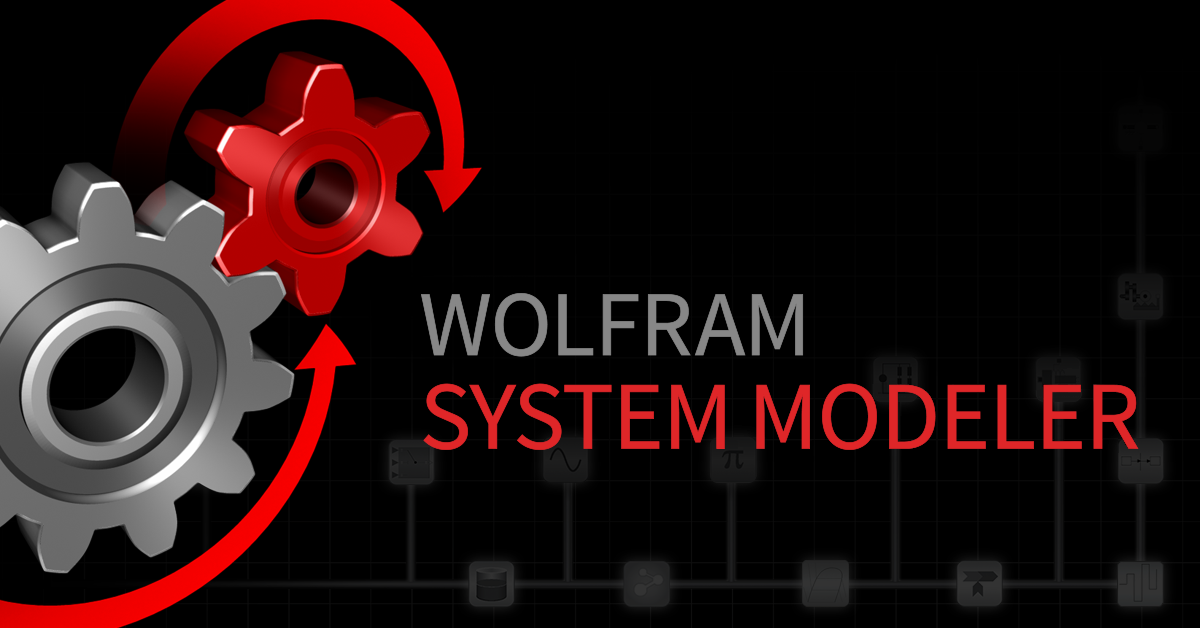
The upcoming version will include features designed to accelerate your model development workflows. Key features include:
- GUI Support for Editing Replaceable Models: New interfaces for quickly parameterizing replaceable models, replaceable functions, nested records, and more.
- Clear and Concise Error Messages: Improved error messages with easy-to-read formatted code to help you understand and troubleshoot issues effectively.
- Configure Error Handling: Options to configure whether errors should be silenced, treated as warnings, or considered actual errors for Modelica compliance, unit checking, and symbolic processing.
This article is provided by Ankit Naik Wolfram
OpenModelica 1.23
Version 1.23.0 of OpenModelica was released on 6 June 2024. It has many improvements and bug fixes compared to 1.22.3 (1.22.4 for Linux), plus some new useful features, in particular regarding the OMEdit GUI and the FMI export feature. Version 1.23.1 is a minor release with fixes to OMEdit and omc to avoid crashes.
Real parameter values returned by the front-end when flattening models often had bad rounding, such as 499.99999999999 instead of 500 or 1.00000000000012 instead of 1.0.
Also, bad rounding used to plague parameter values with unit conversions driven by displayUnit attributes in the OMEdit GUI.
In some cases, very long decimal outputs such as 1200000000.0 were displayed, instead of the more easily understood 1.2e9.
This issue of proper rounding of decimal numbers was tackled systematically and resolved thanks to rounding algorithms based on the Ryu library.
The new front end has been further improved. The front end can now provide clean BaseModelica flat output from the command line; experimental array-preserving flat output can also be obtained.
Most of the work on the backend is still focused on developing the new backend. Two notable improvements are worth mentioning:
- the non-standard
annotation(tearingSelect)was deprecated and replaced byannotation(__OpenModelica_tearingSelect) - according to the Modelica Language Specification Sect. 8.6
parameters with no binding and no explicitly set value now cause the compilation to fail, see #10386.
This may cause some old models to fail during compilation, but it is the required behaviour by the specification, to guard against parameters that are accidentally left without a meaningful value.
The fix is to provide the modifier for the parameters without bindings, or to add an explicit
start = 0modifier in the library model. - Issues related to the replaceable components and classes in the parameters window.
The quality of the OMEdit GUI was further improved over the previous version 1.22.3, with about 55 issues fixed. Most of them are bug fixes, but there are also some new features,
- Duplicate class feature now works correctly also when the class is duplicated in another scope #5346
- Top-level model parameters can now be edited with the GUI #4408
- Further optimization of the editor’s response time when deleting components and adding/deleting connections #11920
- All rounding issues in the GUI resolved #8865
The full 1.23.0 release notes are available here.
The next release 1.24.0 is planned to be released in Q4 2024. It should include further improvements to the GUI such as parameter editing in hierarchically structured model, restructured Simulation Setup dialog, Rename feature with refactoring, faster editing of large models in OMEdit, etc. Further improvements in FMI 2.0.x export are also planned.
This article is provided by Adeel Asghar, Francesco Casella Open Source Modelica Consortium
Modelon News

New and Updated Features in Modelon Impact
We’ve been hard at work making significant enhancements to Modelon Impact. Here are a few of the product highlights from the recent 2024.1 release.
New Feature: Workspace Sharing
Modelon Impact users on Modelon Managed Cloud can now share their workspace with a simple web link. Workspaces, along with their corresponding models, projects, libraries, and library dependencies, can now be accessed and copied by another Modelon Impact user. This enables easy transfer of work between colleagues and higher levels of collaboration on the same projects.
Updated Feature: Excel Add-In
We’ve updated our add-in that connects Microsoft Excel with Modelon Impact for easily configuring and running multiple experiments on a model. Along with usability enhancements, outputs from both steady-state and dynamic simulations can directly populate Microsoft Excel for further data analysis.
We’ve made multiple additions and improvements across the platform, including new library content, an improved debugging experience, access to earlier solvers, and more. Read the full release notes here.
Newly Released Modelon Library Content
We’ve made notable enhancements and additions to our Modelica-based libraries with its 2024.1 release. Below are the highlights of this release by each industry.
Energy and HVAC
This blog post highlights recent updates to Modelon’s libraries, specifically tailored for the energy and HVAC-R industries, offering expanded heat exchanger model options, enhanced flexibility in routing configurations, and support for additional industrial data formats. Read the blog.
Aerospace
This blog post outlines recent updates to Modelon’s libraries tailored for the aerospace industry, focusing on hydrogen storage tank architectures and more electric aircraft models. The enhancements include support for horizontal tank configurations, detailed fill and drain simulations, and improved steady-state tank sizing for hydrogen storage systems. Additionally, upgrades to the Electrification Library and Environmental Control Library introduce new sizing workflows, simplified electrical connectors, and updates to environmental control systems such as wing ice protection.
Read the blog.
Automotive
This blog post highlights updates to Modelon’s libraries relevant to the automotive industry, focusing on enhanced thermal management for electric vehicles (EVs) and improved sizing capabilities for EV components. The updates include improvements in modeling integrated thermal systems, such as heat pumps and refrigerant-coolant systems, along with the ability to size components based on operational requirements for dynamic and steady-state simulations. Additionally, the Vehicle Dynamics Library now supports real-time Driver-in-the-Loop simulation with rFpro, enabling users to export vehicle models as Functional Mockup Units (FMUs) for real-time simulation. Read the blog.
New Blogs
Predictive Motion Control Considering Body Attitude Constraints for Four in-Wheel Motor Vehicles – IEEE CDC 2023 Winners
This post details the innovative use of Model Predictive Control (MPC) to develop a controller for a vehicle dynamic system. The proposed controller was developed for the 62nd IEEE Conference on Decision and Control (CDC 2023) Benchmark Challenge for Autonomous Driving Control, and it stood out from fierce competition among dozens of teams, winning the gold award. Read the blog.
Looking Ahead to Innovations in Aircraft Hydrogen Storage in 2024
Modelon’s Aerospace Industry Director, Michael Sielemann, sees three essential design and engineering opportunities that can streamline progress for aircraft hydrogen storage in 2024: gravimetric efficiency, insulation choices, and fueling times. Read the blog.
Upcoming Events

Modelon Innovate 2024
Modelon Innovate is an international event focused on system simulation for innovation and product design within commercial industries. This event consists of two days – a conference day and a workshop day. The conference day consists of insightful presentations by speakers utilizing system simulation at their organizations. The workshop day consists of hands-on, instructor-led classes to help Modelon users improve their capabilities with Modelon technology.
Early bird pricing ends on March 31st, 2024.
Learn more about Modelon Innovate
This article is provided by Swati Tyagi (Modelon)
Modelon News

News and Updates from Modelon
In Q2, we released a new library, published a comprehensive eBook, and continued preparing for our international system modeling and simulation conference in October.
New: Energy Systems Library
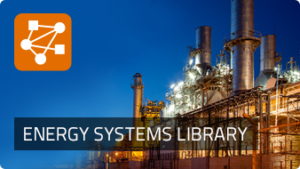
Energy Systems Library (ESL) is designed to plan and optimize industrial to utility-scale energy systems (electricity/heat/hydrogen). The variety of pre-configured models, detailed customization capabilities, and interface to set boundary conditions enable holistic system analyses for energy system engineers working on decarbonization and green energy. ESL allows users to perform techno-economic optimizations, including the production, storage, and consumption (purchase and sale) of electricity, heat, water, CO2, hydrogen, and other fuels.
Learn more about the Energy Systems Library.
New eBook: In-House vs. Commercial System Simulation Tools
Many engineers believe in-house system simulation tools are the most accurate and cost-effective for physical system design and simulation. Is that really the case? Our new eBook explores the benefits and trade-offs of in-house and commercial system simulation tools.
Upcoming Event: Modelon Innovate 2024
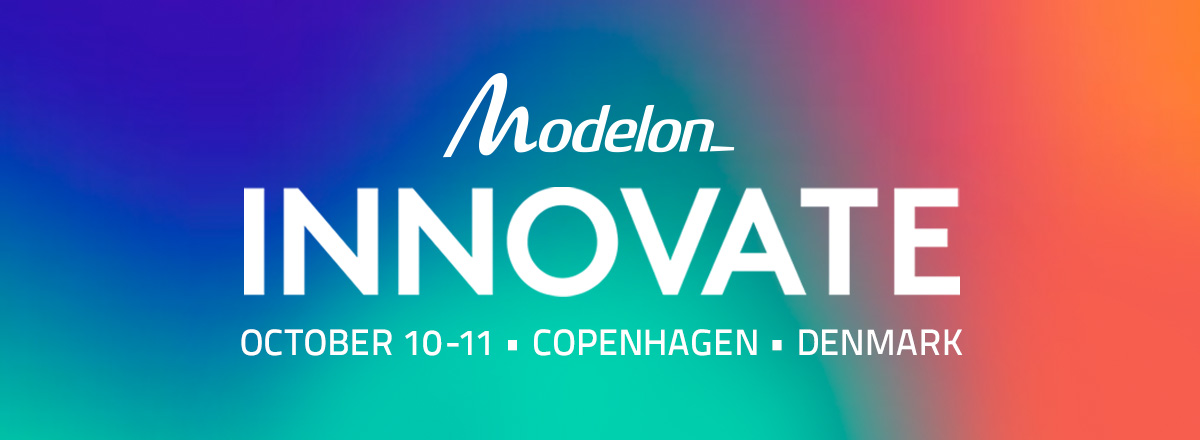
Are you interested in meeting some of the brightest minds in system simulation and Modelica? This October 10-11th in Copenhagen, engineers from around the world will share insights about system modeling and simulation technology at Modelon Innovate 2024.
Learn more about Modelon Innovate.
New Solution: Energy Systems Optimization
Leverage Modelon’s industry experts, the new Energy Systems Library, and a techno-economic optimization framework to improve energy system investment decisions.
Core functions:
- Estimate CAPEX/OPEX
- Achieve Climate Targets
- Improve Investment Decisions
Learn more about Energy Systems Optimizatiom.
New Blog: Cooling Systems for Electric Vehicle Powertrains
This blog explores approaches for modeling complex coolants networks using thermofluids library content to enable greater analysis.
This article is provided by Matt Bourland (Modelon)
News from libraries
DLR releases Community Updarte of the ThermoFluid Stream Library
The ThermoFluid Stream Library is a free open-source library for the robust modeling and simulation of complex thermal architectures. Since winning the Modelica Library Award in 2021, it steadily grew in popularity.
For this reason, we have organized a community event on June 19 with particiants from all backgrounds: large and small companies, teachers and tool vendors.
In preparation of this event, many new contributions have been made that widen the library’s application field:
New and upcoming Features of the DLR ThermoFluid Stream Library:
- Static head. Thanks to a contribution from Saab components with static head pressure are now available.
- Models for tanks and pipes using static head are now included.
- Gravity acceleration can dynamically change during simulation.
- New pipe models. are added to the library thanks to a contribution from HTWG Konstanz.
- Models for pipes, bends, diffusors and splitters are now available.
- Validated against Idel’chick.
- Improved pump models. The old pump models was a weak point of the library. There are now two new variants:
- A very simple pumple to be intended as device for mass-flow control
- A pump model of higher fidelity with few selected key parameters for easy specification.
- 2-phase Heat Exchanger models especially for vapor cycles:
- Based on models for condensation and evaporation in pipes from Baehr.
- Validated against our own vapor cycle test rig.
- Interface to TIL Media. In addition to the existin media from the MSL and XRG.
- Customers of the TIL Media Library can now use these excellent media models in combination with the ThermoFluid Stream.
- The current interface solution is currently regarded as Dymola specfic.
- Such high quality media models can lead to significant performance increase for 2-phase systems.
Thanks to improvements in Dymola, critical 2-phase system simulations now perform up to 3 times faster. We also pay attention to maintain compatibility to OpenModelica and other tools such as Modelon Impact.
At the community event, we have recognized that OpenModelica and the ThermoFluid Stream Library are now increasingly used for teaching Thermodynamics such as in the examples of Peter Junglas.
This article is provided by Dirk Zimmer
Process Systems Library – Dynamic Simulation of Power-to-X Processes
For the past 5 years, TLK Energy has been developing a flexible and powerful Modelica library for process engineering. It has gone through several stages of development, from using Multiflash from KBC to calculate physical properties, to a completely new approach in calculating the state variables of the medium, to a stand-alone, affordable library compatible with Dymola and Modelon Impact. Instead of the usual calculation method using equilibrium states, phase properties are calculated separately, which offers more possibilities for parameterization. This makes it possible to simulate processes that were previously difficult to implement. Now the Process Systems Library (PSL) enables the simulation of many Power-to-X processes, from water electrolysis and carbon capture to synthesizing complex chemicals like methane or methanol.
Example model: PEM Electrolyzer stack cooling
PEM electrolysis is highly efficient for hydrogen production, but to ensure optimal performance, the stack must be properly cooled. Reusing the waste heat can enhance the energy efficiency of the entire system.
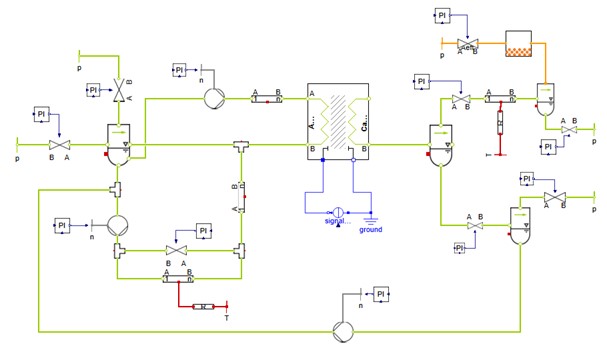
During the electrolysis of water to hydrogen, waste heat needs to be removed for efficient operation. Many PEM stack manufacturers specify a maximum temperature rise (ΔTmax) between the incoming and outgoing reactant streams. Exceeding ΔTmax reduces the stack’s lifespan and compromises system economics.
Adjusting the incoming mass flow controls the temperature rise, ensuring ΔTmax is not exceeded. Beyond a certain water mass flow, hydrogen production remains constant, but increased water flow enhances stack cooling. Minimizing pump power consumption involves keeping the mass flow as low as possible while maintaining ΔTmax.
A suitable control strategy helps maintain this optimal temperature rise dynamically. The PSL provides a simulation-ready example model that accounts for all these parameters, aiding in developing an appropriate operation for individual applications.
If you are wondering if PSL is suitable for your process and would like to know more or get a trial license, please contact us: info@tlk-energy.de
This article is provided by Yann Pellny (TLK Energy GmbH)
Education news
Claytex technical blog

Claytex publishes a technical blog covering all things Modelica and Dymola.
Our new generalized simulation interface - Censeo
Over the years, there have been numerous instances where we have had the need for an easily configurable generalized simulation interface, often referred to as a graphical user interface (or GUI for short), to serve as a way for a user to alter inputs to a particular simulation model without the full overhead of the development interface (Dymola).

Read the complete article here
This article is provided by Mahdieh Mehrabi (Claytex)